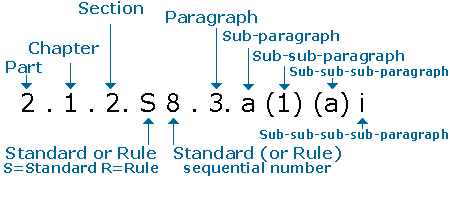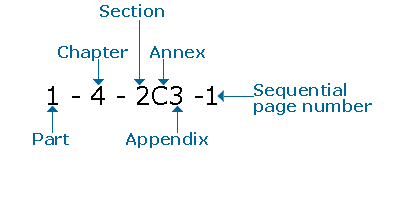Technical Airworthiness Manual
Note: This PDF document has been tested to comply with WCAG 2.0. To access this file, you must have a PDF reader installed. If you do not already have such a reader, there are numerous PDF readers available for free download or for purchase on the Internet:
- Adobe Acrobat Reader
- Foxit Reader (English only)
- xPDF Reader (English only)
- xPERT PDF Reader (English only)
If you have difficulty viewing this PDF document, please contact the Directorate of Technical Airworthiness and Engineering Support 2 for assistance.
Release letter and summary of changes
The TAM is officially released to stakeholders by means of a TAM Release letter with an accompanying summary of changes. Letters for earlier changes are available by contacting DTAES 2.
TAM structure
The TAM format is based on Canadian Forces Technical Order (CFTO) conventions. It is identified by the National Defence Index of Documentation (NDID) number C-05-005-001/AG-001. The document office of primary interest (OPI) is DTAES 2, and the contact officer is DTAES 2-2.
Numbering system
The TAM numbering system provides a unique identifier to each heading, rule, standard, paragraph and sub-paragraph. The following diagram illustrates what each digit represents in a TAM reference.
Paragraph numbering

Example of paragraph numbering: paragraph number 2.1.2.S8.3.a(1)(a)i
In the example above: ‘2’ identifies the part; ‘1’ identifies the chapter; ‘2’ identifies the section; ‘S’ identifies the standard (similarly, a rule would be identified by means of the letter ‘R’); ‘8’ identifies the sequential number of the standard (or rule); ‘3’ identifies the paragraph number; ‘a’ identifies the sub-paragraph; ‘(1)’ identifies the sub-sub-paragraph; ‘(a)’ identifies the sub-sub-sub-paragraph, and ‘i’ represents the sub-sub-sub-sub-paragraph. In other words, this is sub-sub-sub-sub paragraph ‘i’, of sub-sub-sub-paragraph ‘(a)’, of sub-sub paragraph (1) of sub-paragraph ‘a’ under paragraph ‘3’ of standard number 8 of Part 2, Chapter 1, Section 2 of the TAM.
Page numbering

Example of page numbering: page number 1-4-2C3-1
In the example above: ‘1’ identifies the part; ‘4’ identifies the chapter; ‘2’ identifies the section; ‘C’ identifies the annex; ‘3’ identifies the number of the appendix to the annex, and ‘1’ is the sequential number. In other words, this is page 1 of Appendix 3 of Annex C, which can be found in Part 1, Chapter 4, Section 2 of the TAM.
NOTE: Page numbers are never used for cross-referencing in the TAM.
Structure
The TAM is divided into five parts. Each part is divided into chapters. Each chapter contains up to three sections. Section 2 contains the rules and standards associated with a chapter (or subject). These divisions, as well as the purpose of advisory notes, are explained below.
Parts
The TAM is divided into five parts:
- Part 1, Management Framework - This part describes the Technical Airworthiness Program and its features, such as rules and standards pertaining to the Program's key building blocks. Assignment of technical authority, airworthiness program and product-related standards, as well as the quality management system are included in this part.
- Part 2, Initial Airworthiness - This part contains the rules and standards pertaining to the activities leading to the initial release to service of aeronautical products.
- Part 3, Continuing Airworthiness - This part contains the rules and standards pertaining to the conduct of maintenance, design change certification, in-service configuration management, etc. In other words, Part 3 contains all subjects that are not related to initial airworthiness or in-service activities of aeronautical products.
- Part 4, Disposal - This part covers the disposal of aeronautical products and the organizations responsible for it.
- Part 5, Airworthiness Processes - This part contains the rules and standards for those airworthiness processes that apply to both initial certification and continuing airworthiness, in support of the Technical Airworthiness Program.
Chapters
Each part of the TAM is further divided into chapters by topic. A chapter contains an independent subject and can vary greatly in length depending on the complexity of the subject.
Sections
Each chapter is further divided into the following three sections:
- Section 1: Introduction - Contains information helping readers gain an understanding of the subject of a specific chapter. It explains what the Rules and Standards will achieve, provides historical information relevant to the chapter, detailing what happened prior to the Rules existing; and describes what the chapter is all about (concepts and definitions).
- Section 2: Rules and Standards - This section contains the Rules and Standards for each chapter. This is the only material in the TAM that is legally enforceable and accredited organizations must comply with it. The audit checklists are based on this material. Organizations seeking accreditation must prove their compliance to each Rule and Standard in their Airworthiness Process Manual.
- Airworthiness Rules: Airworthiness Rules are rules of conduct for the Technical Airworthiness Program. They clearly state what an accredited organization or an applicant must achieve. A rule will normally link to at least one standard, as compliance is measured against the rule by means of the standard. A rule is identified by a unique number based on the Part, Chapter and Section (always Section 2) where it is located in the TAM, and given a sequential number. To assist in the identification of rules, an "R" is to precede the sequential number. For example, 4.3.2.R1 identifies Rule 1 in Part 4, Chapter 3, Section 2.
- Airworthiness Standards: A standard is a description of what must be achieved in order to be compliant with the applicable rule. The convention for numbering standards is similar to the rules, but an "S" is used to identify a standard. For example, 4.3.2.S1 identifies Standard 1 in Part 4, Chapter 3, Section 2.
- Advisory Notes: An advisory note is to provide supplementary information about a rule or standard, such as background information, acceptable means of compliance or additional information to assist the implementer in meeting the requirement.
-
Section 3: Advisory Material - Advisory Material provides recommended practices/processes and guidance information to assist organizations in the interpretation of standards and the development of local procedures to satisfy regulatory requirements. To provide TAM users with fast access to this clarification and guidance material, this section of the TAM will be gradually replaced with TAA Advisories, and made available online, under TAA Advisories.
Annexes and appendices
Annexes and appendices may be added to any section. They are meant to provide additional material to amplify the content of the section to which it refers.
Change request form
Requests for changes to the TAM are to be submitted by using a TAM Change Request (TCR) form. Complete and submit a TCR to formally request a minor, major or editorial amendment to the TAM. Send the form electronically to DTAES 2-2.
Contacts
To learn more about the TAM, or to obtain a copy of the TAM Change Request Form, please contact the Directorate of Technical Airworthiness and Engineering Support (DTAES) 2:
- by email, or
- by phone, at +1-613-808-3408